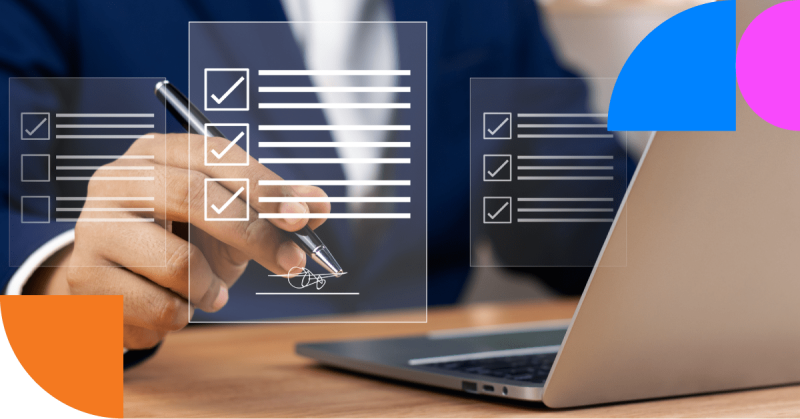The same goes for your eLearning platform. To get the most out of it, it needs to be the right fit. It needs to look familiar and feel comfortable. It needs to sync with the size, shape, and structure of your organization. And it needs to offer learners a personal touch.
In short, it needs to be customizable. With a customizable LMS, there’s no need to shoehorn your unique requirements into an unyielding, one-size-fits-all portal. Instead, you can design a learning experience that fits around you.
There are good reasons for doing this. Top of the list is that your learners are more likely to use it. (And more likely to focus their attention where it matters most—on their training.)
But the benefits of a customizable LMS aren’t just about increased engagement. Maximizing training efficiency, scalability, a higher ROI, and better learning outcomes all follow-on from using a customized approach.
So, how can you reap the rewards a custom LMS has to offer? Here, we focus on six key areas.
What you can do with a customizable LMS: Six ways to customize your training portal
There are a few different ways you can use LMS customizations to maximize training efficiency and impact. These range from some basic visual adjustments to advanced features designed for more intricate learning ecosystems. The unique nature of your enterprise setting will, of course, determine those that are relevant to you. But using a customizable LMS tool, there are six different options to consider.
Pro tip: If you’re wondering how to choose the right customizable LMS for your organization, use this list to help you decide.
1. Adjust the look and layout
Your training portal is the gateway to all of your courses, content, and resources. Providing a framework, it sets the tone for your employees’ learning journey. So what it looks like and how it functions matters. With a customizable LMS, you can change the look and feel of your portal to match your own branding and design standards. And sync the user experience so it’s in line with the rest of your training tools.
You can, for example:
- Add your own corporate logo
- Upload your own favicon
- Apply your own color palette, fonts, and backgrounds
- Modify the overall theme
- Adapt the page layout and placement of navigation menus
- Include links to custom features and content
All of these bespoke adjustments are easy to apply using a customizable, enterprise LMS. Most can be actioned through the account settings function. Some are set up using custom CSS and Javascript. Either way, they’re all simple tweaks that will give your users the best introduction to learning possible. And just because they’re simple, doesn’t mean they’re of little value. Using a customizable LMS to adjust how your portal looks, you can:
Provide a consistent, cohesive, and immersive user experience
With a customizable LMS, your employees don’t have to spend time or emotional energy adjusting to an unfamiliar environment. Instead, they can dive right in. And start learning straight away.
Elevate the importance of training
Aligning eLearning resources with other corporate assets elevates their importance. And signals that L&D is an integral and equal part of your organization’s priorities and values.
Reinforce your brand identity
Taking corporate ownership of your training portal reminds learners that the content has been designed and created specifically for your organization. And targeted towards them.
2. Divide and conquer
Within every organization, there are different sets of training hierarchies. And each of these hierarchies has a diverse and unique set of needs. Using a customizable LMS, you can organize and manage training so that it mirrors your own unique structure and learning ecosystem.
Control user access
Depending on their role, different people require different levels of access to training tools, content, and resources. A customizable LMS allows you to define individual user roles and permissions to reflect this. The three most common user types are administrators, trainers, and learners. But, using a customizable LMS, you can go one step further by defining your own unique user types and fine-tuning their permissions.
Target specific groups
Whether it’s teams, job roles, or skills, most training is designed to work with specific groups or audiences. A customizable LMS is built around this premise. Which means that you can assign common courses to groups of learners, and perform mass actions, all in a matter of clicks. As well as saving time, the group functionality in a customizable LMS also generates a useful overview of user progress.
Create independent training environments
Unlike groups, some training environments warrant their own uniquely branded and designed training portals. This could be the case if you’re providing both internal and extended external enterprise training, for example. Or if your training audiences are split across different locations with different language requirements, time zones, and cultural expectations. These environments are often referred to as “Branches”. With a customizable LMS, it’s possible to create learning portals for different branches. And assign each one a unique set of rules and behaviors, including different admins and user permissions, different course catalogs, and even custom branding.
3. Keep content flowing
Teaching styles, training objectives, and learner paths and profiles all influence the way course content is presented. Using custom LMS tools, you can modify the workflow, layout, and structure of courses to suit your combined needs.
You can, for example:
- Rearrange blocks of content
- Add custom sections or modules
- Adjust the flow of content
- Incorporate multimedia elements
By doing so, you’ll grow engagement. And ensure the content you’ve taken time to develop gets maximum exposure and use.

4. Evaluate your learners, your way
Providing the right blend of content is, of course, a core part of eLearning. But equally important is knowing how effective that content is. When it comes to assessing your learners’ progress, different factors will influence your approach. These typically range from the type of training and specific course objectives to individual learner preferences and company-wide goals. With a customizable LMS, you can tailor your evaluation methods to align with all of these factors. Tools embedded in your training platform will enable you to:
- Pick assessments (quizzes, tests, and assignments) that sync with different learning intentions
- Ask different types of questions (multiple choice, free text, drag and drop, fill the gap) depending on the training topic and your reporting preferences
- Configure questions according to their importance. For example, assign more points to topics that carry more weight
- Apply dependencies to determine how learners progress through a module or a course
- Set a duration to create pace and keep the momentum going
- Select the gamification elements you know your learners will respond best to (points, badges, levels, leaderboards, and rewards )
- Establish your own benchmarks. You can, for example, make the pass rate higher or lower according to your own standards and requirements
5. Report what matters
Your assessments have helped gather the right type of data. But you need a way to turn that data (and other stats stored inside your LMS) into meaningful and actionable insights. Using the reporting and analytics capabilities in a customizable LMS, you can set your own data points and parameters for evaluation.
The metrics you choose will depend on your objectives, goals, and requirements. They could, for example, include some or all of the following: learner performance, completion rates, training effectiveness, time spent, and rate of progress. Either way, using a customizable LMS, you’re in control. And with your unique set of rules in place, you’ll go on to receive custom reports you can use to make data-driven improvements to your training.
6. Make it personal
People learn in different ways. And training’s more effective when it’s targeted to meet each person’s needs. This may seem like an impossible task —particularly for enterprise organizations. But with a customizable LMS, it’s surprisingly easy to achieve.
Using data gathered from custom reports, a customizable LMS gathers insights into each employee’s learning journey. These insights cover metrics such as progress, attainment, user preferences, and frequency and format of training (how they like to learn and how often).
By combining all of this information and syncing it up with each employee’s user profile (job type, department, and location), personalized training becomes possible. For example, adaptive learning paths can be used to customize content based on each learner’s knowledge and experience, learning styles, and career goals. Individualized assessments can be used to dig deeper into potential skills gaps. And targeted support provided to address areas for development.
7. Push the boundaries
So far, we’ve listed the standard customization options available in a customizable LMS. Working together, these will provide a high level of personalization for your training portal. But if your learning ecosystem is large and complex (with multiple external dependencies), you may want to go one step further.
The advanced features in a customizable LMS can help you do this. Use them to:
- Fine-tune the visual elements of your platform by customizing its CSS
- Streamline administrative tasks using automation tools
- Connect with other systems and tools using integration capabilities and API support
- Modify existing features like reports, themes, and workflows, or add new functionalities and UI elements with custom plugins
Spark a powerful chain reaction
LMS customizations set off a powerful sequence of events. They make your training portal feel like a natural extension of your website and your brand. Which means that training feels like a natural part of your organization and culture, too. This feeling of familiarity drives engagement. And triggers a rise in course completion rates. Leading, ultimately, to a growth in employee skill development.



